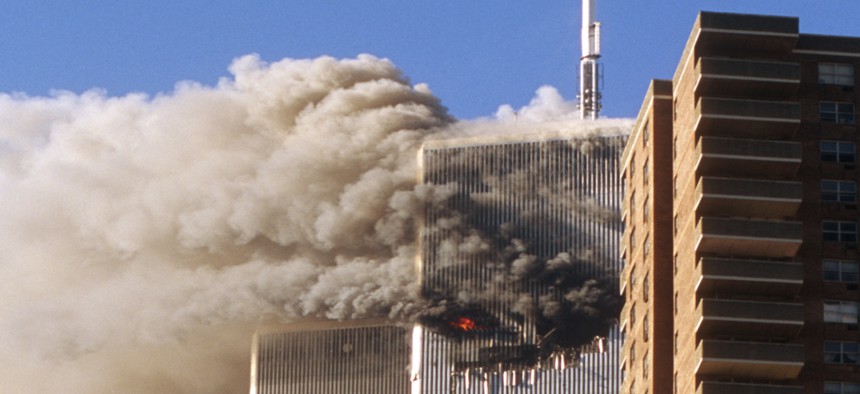New Research Shows 9/11 First Responders Are Twice as Likely to Develop Blood Cancer

The World Trade Center towers before they collapsed on Sept. 11, 2001. Shutterstock
In the chaos of that day, they were exposed to unprecedented levels of aerosolized dust from the collapsed World Trade Center skyscrapers.
A team of New York-based researchers have presented new findings showing that firefighters who responded to the chaotic scene of the Sept. 11, 2001 World Trade Center terrorist attack are twice as likely than the average person to suffer from a condition that can lead to multiple myeloma, a type of blood cancer.
The team had already been the first to show, in a 2011 study, that 9/11 responders were more likely to get many different types of cancers than other people. In the chaos of that day, they were exposed to unprecedented levels of aerosolized dust from the collapsed skyscrapers. All sorts of carcinogens—polychlorinated biphenyls, polycyclic aromatic hydrocarbons, dioxins, asbestos, and diesel smoke, among them—were swirling in the air as firefighters carried out emergency responses that day and in the 10 months after the attack as they continued to help clear the site.
In the study published April 26 in JAMA Oncology, that same group of researchers presented new evidence showing that the responders have an increased risk for developing myeloma precursor disease, specifically. That’s a condition that can lead to multiple myeloma, which causes cancer cells to take up residence in the bone marrow, where they essentially crowd out healthy blood cells.
“We carried out this new study to do more than just treat cancer,” says David Prezant, one of the study’s co-authors, in a statement. “We wanted to find early, predictive signs of cancer that would allow us to screen people and monitor those found to be at risk.”
In detecting the precursor disease, the researchers were able to do just that. The study involved two groups. The first included 781 white, male firefighters who were at the scene of the World Trade Center on Sept. 11, 2001. The second group included white men living in Olmsted County, Minnesota—more than 1,100 miles away from New York City—who were never exposed to the same toxic air conditions. The scientists took blood samples from the participants every 12 to 18 months for two years, through which they could determine whether or not the men had biomarkers of the precursor disease. .
Ultimately, the scientists found that the New York City first responders were twice as likely to have the precursor disease compared to the Minnesota group. Specifically, they found 7.63 cases of the precursor disease per 100 New York City firefighters versus 4.34 cases per 100 Minnesotans. The scientists also found that 16 firefighters already had multiple myeloma, a rate that’s about 1.8 times higher than in the Minnesota group.
In many cases, myeloma precursor disease causes no problems, but it can progress into multiple myeloma. In fact, in cases in which people do develop multiple myeloma, the condition is almost always preceded by the precursor disease.
In a separate but related study also published in JAMA Oncology, a different group of researchers estimated that among New York firefighters exposed to the World Trade Center site, more than 2,700 cancer cases will be diagnosed between Jan. 1, 2012 and December 21, 2031, slightly higher than the New York state average. They also projected that the healthcare costs associated with the treatment of those cases would exceed $235 million.
Chase Purdy writes for Quartz, where this article was originally published.
NEXT STORY: The States Most and Least Prepared for Public Health Disasters





